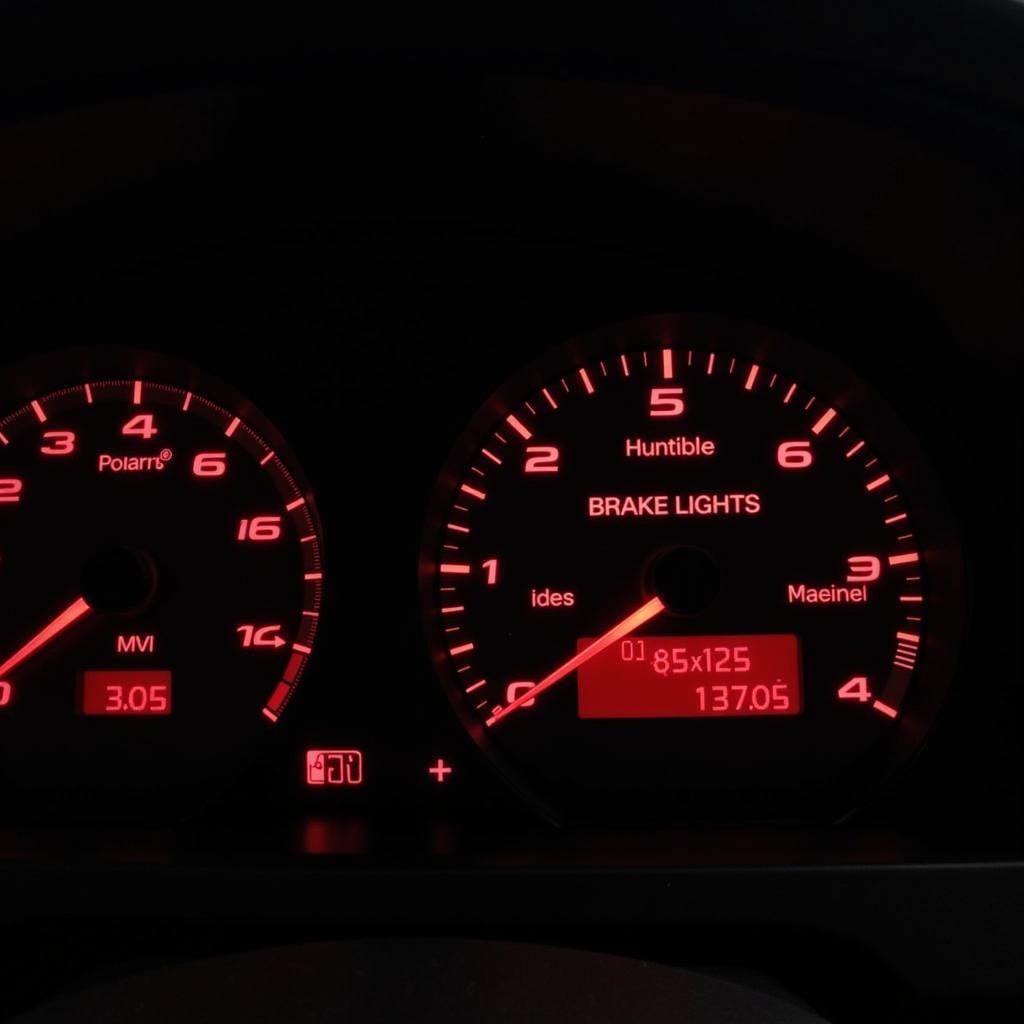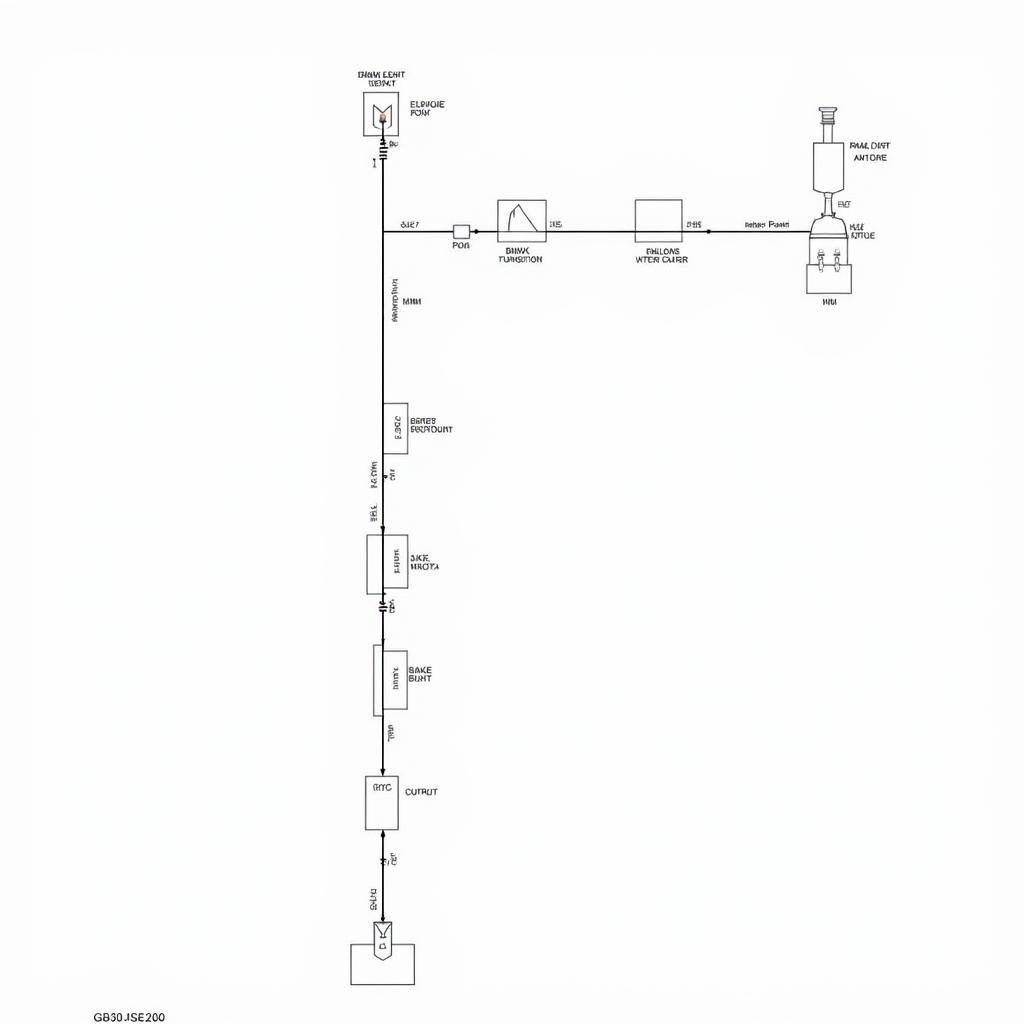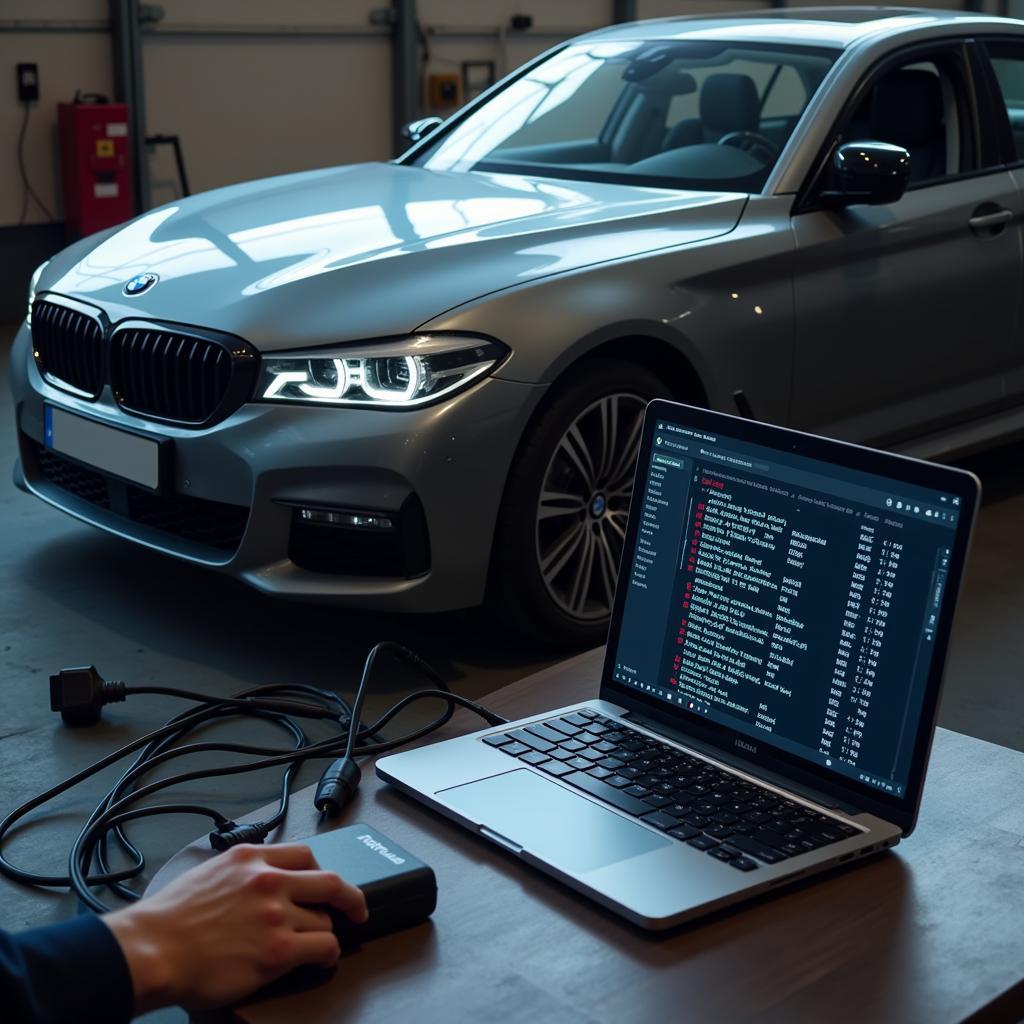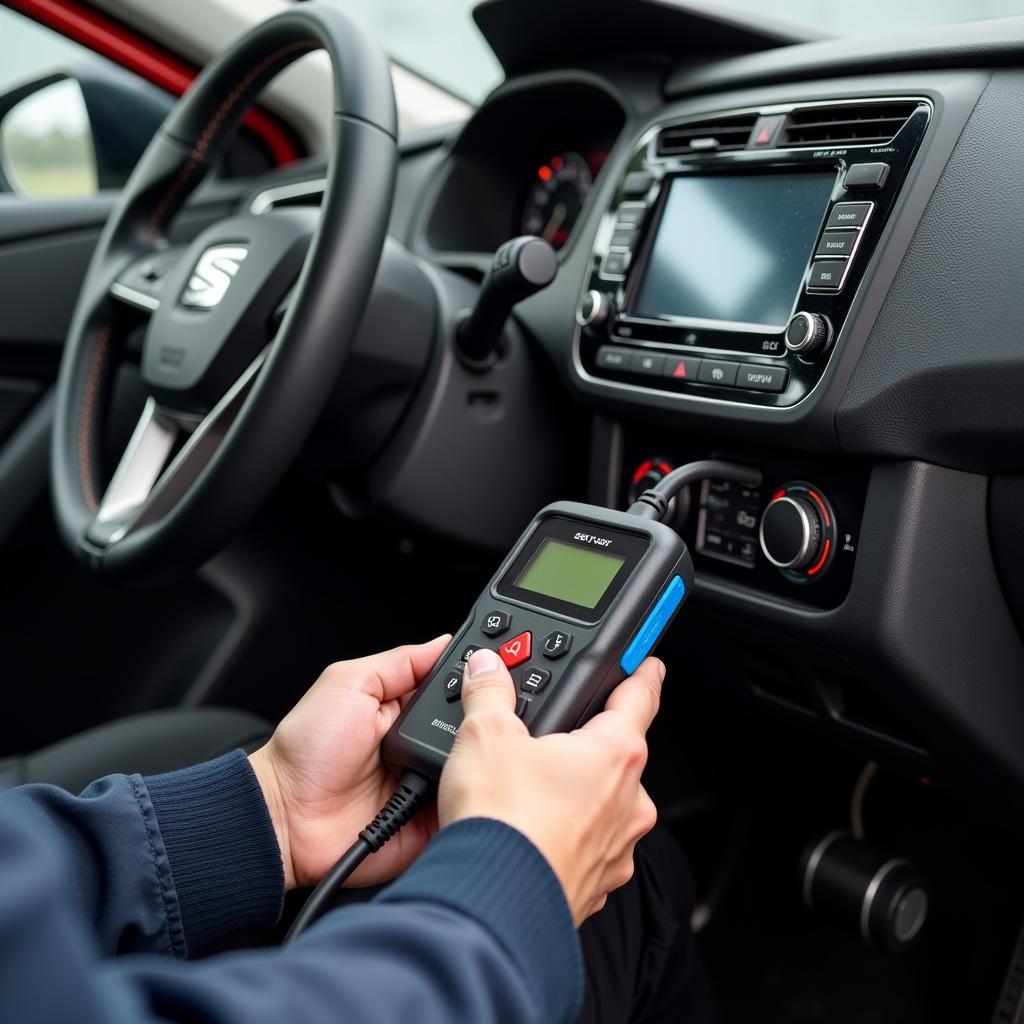The dreaded “check brake lights” warning on your BMW dashboard can be a cause for concern. This warning usually means there’s an issue with your brake light system, which can compromise your safety and the safety of others on the road. This article will help you understand why the “check brake lights” warning appears on your BMW and guide you through potential solutions to get you back on the road safely.
Common Reasons for the “Check Brake Lights” Warning
Several culprits can trigger the “check brake lights” warning on your BMW’s dashboard. Here are the most common reasons:
- Burnt-out Bulb: Just like any other car, BMW brake lights use traditional bulbs that can burn out over time.
- Faulty Brake Light Switch: Your BMW’s brake light switch plays a crucial role in activating the brake lights when you press the brake pedal. A malfunctioning switch can disrupt this process, triggering the warning.
- Wiring Issues: Over time, the wiring harness connecting your brake lights can become damaged, corroded, or loose, interrupting the electrical signal and causing the warning light.
- Bulb Socket Problems: Corrosion or damage to the bulb socket can prevent the bulb from making proper contact, leading to a brake light malfunction and the warning message.
Diagnosing the Problem
 BMW Dashboard Showing Brake Light Warning
BMW Dashboard Showing Brake Light Warning
Before you start replacing parts, it’s crucial to diagnose the root cause of the “check brake lights” warning on your BMW:
- Check the Brake Lights: Have a friend or family member press the brake pedal while you stand behind the car. Verify if all brake lights, including the high-mounted brake light, are illuminating correctly.
- Inspect the Bulbs: If one or more brake lights are out, the bulbs are the likely culprits. Replace them with the appropriate type for your BMW model.
- Test the Brake Light Switch: The brake light switch is typically located under the dashboard near the brake pedal. You can test its functionality by depressing and releasing the brake pedal while listening for a clicking sound. If you don’t hear a click, the switch might be faulty and needs replacement.
- Examine the Wiring: If the bulbs and switch seem fine, inspect the wiring harness connecting the brake lights for any signs of damage, fraying, or loose connections. Repair or replace any damaged sections as needed.
Addressing Complex Issues
 BMW Brake Light Wiring Diagram
BMW Brake Light Wiring Diagram
While the above steps can resolve common brake light issues, more complex problems might require professional expertise:
- Advanced Diagnostics: Modern BMWs come equipped with sophisticated electrical systems. Diagnosing problems within these systems often requires specialized diagnostic tools and software, which qualified technicians usually possess.
- Programming and Coding: In some instances, resolving the “check brake lights” warning might involve reprogramming or coding your BMW’s electronic control units (ECUs). This process requires specific knowledge and software typically available at dealerships or specialized repair shops.
“Modern BMWs are heavily reliant on software and electronics,” says Alex Turner, a veteran automotive electrician with over 20 years of experience. “Even seemingly simple issues like a brake light warning might require software updates or coding adjustments for a complete fix.”
Remote Diagnostic and Programming Solutions
 BMW Remote Diagnostics Using a Laptop
BMW Remote Diagnostics Using a Laptop
With the advancement of technology, remote diagnostic and programming services have become increasingly popular. These services allow technicians to connect to your BMW remotely and perform various tasks, including:
- Scanning for Fault Codes: Remote diagnostics can read your BMW’s fault codes, providing valuable insights into the underlying cause of the “check brake lights” warning.
- Software Updates: In some cases, software updates for your BMW’s ECU might be necessary to rectify brake light issues. Remote programming services allow technicians to install these updates wirelessly.
- Coding and Adaptations: Some brake light problems might require specific coding adjustments or adaptations to your BMW’s ECU, which remote programming services can address.
While remote diagnostics and programming offer convenience, choosing a reputable and qualified service provider specializing in BMW vehicles is crucial.
Preventing Future Issues
Taking proactive measures can help prevent future occurrences of the “check brake lights” warning on your BMW:
- Regular Maintenance: Adhering to your BMW’s recommended maintenance schedule, including bulb replacements, wiring inspections, and brake system checks, can identify potential issues before they escalate.
- Quality Parts: When replacing bulbs, switches, or other components, always opt for high-quality parts that meet BMW’s specifications to ensure compatibility and longevity.
- Prompt Repairs: Addressing any warning lights or issues with your BMW’s electrical system promptly can prevent minor issues from becoming major problems.
Conclusion
The “check brake lights” warning on your BMW is a crucial safety alert that should never be ignored. By understanding the common causes, performing basic troubleshooting, and seeking professional help when needed, you can ensure the proper functioning of your brake light system and maintain safe driving conditions for yourself and others on the road. Remember, a little vigilance can go a long way in preventing accidents and keeping your BMW running smoothly.
FAQs
1. Can I drive my BMW with the “check brake lights” warning on?
It’s not advisable to drive with the warning light on. It indicates a potential problem with your brake lights, which are crucial for safety.
2. Are BMW brake lights covered under warranty?
Warranty coverage for brake lights varies depending on your BMW’s warranty terms and the specific issue.
3. How often should I replace my BMW’s brake light bulbs?
It’s generally recommended to inspect your BMW’s brake lights every six months or 12,000 miles and replace any burnt-out bulbs.
4. Can a faulty brake light switch cause other electrical problems?
Yes, in some cases, a faulty brake light switch can affect other electrical components related to your BMW’s brake system, such as the cruise control or transmission.
5. How do I reset the “check brake lights” warning after a repair?
In many BMW models, the warning light should disappear automatically once the underlying issue is addressed. However, you might need to use a diagnostic tool to clear the error code in some cases. If you are uncomfortable doing this yourself, a qualified technician can assist you.
Internal Links:
- If you’re experiencing similar issues with your brake fluid warning light, you can find more information on our page about the bmw 320d brake fluid warning light.
- For those dealing with a combination of warning lights, our article on bmw x3 abs 4×4 and brake warning lights all on might offer valuable insights.
- To understand how common brake light problems are addressed and resolved, take a look at our case study on bmw x3 dsc & brake warning lights fixed.
- BMW owners experiencing the brake warning light issue might find our article on bmw e36 brake warning light helpful.
- For a broader perspective on the connection between ABS and brake warning lights, you can visit our page on abs warning light brake light.


